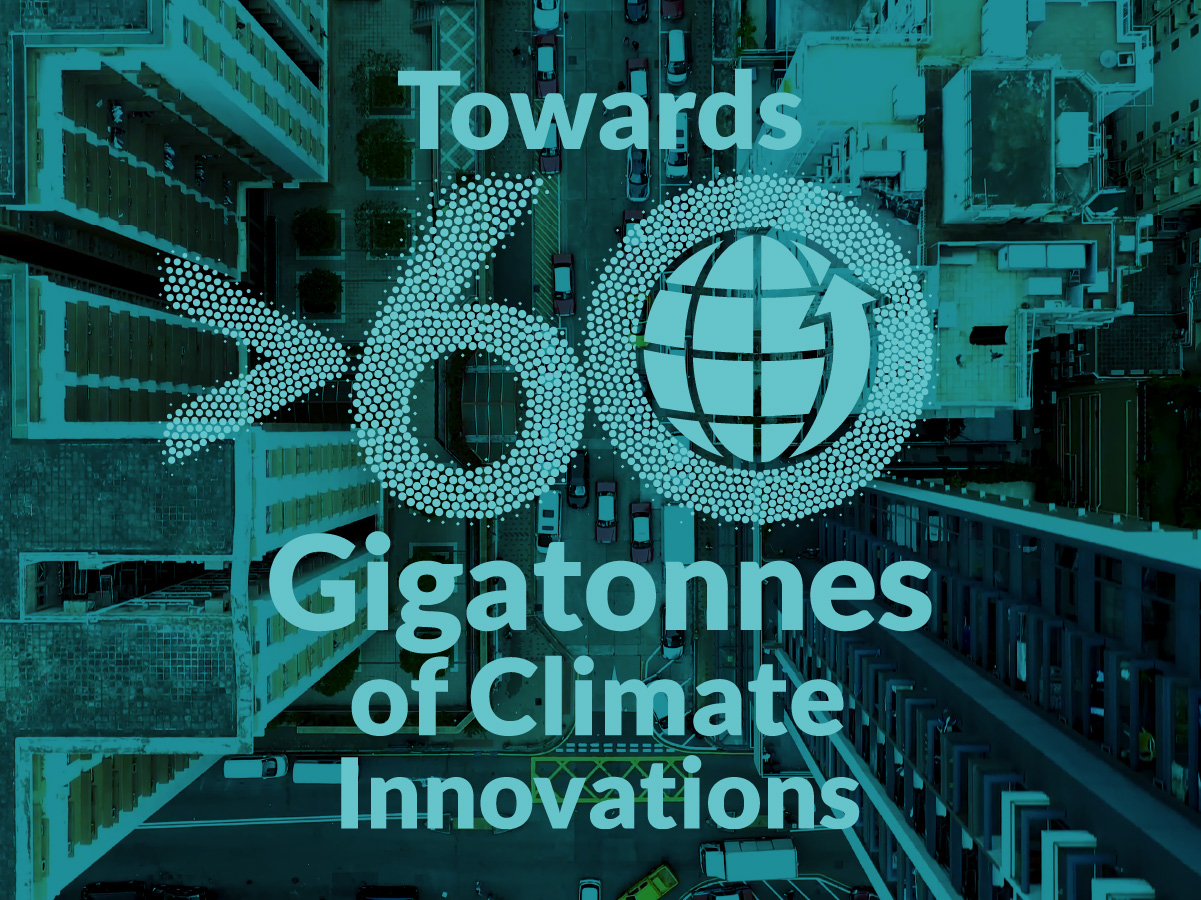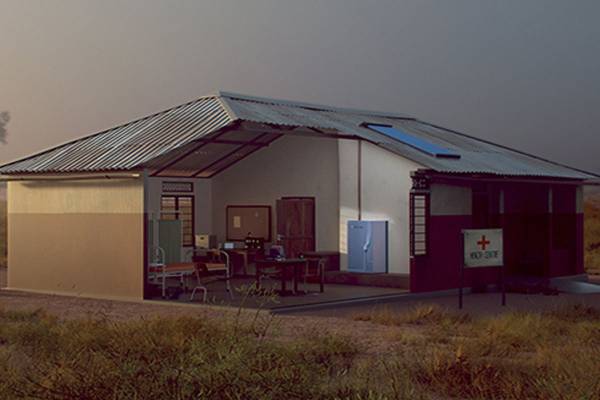Nominated innovations
1000 innovative clean energy solutions and > 150 framework enablers with the potential to deliver more than twelve gigatonnes of avoided emissions by 2030
These assessments are based on a basic avoided emission assessment. The overall concept of avoided emissions is that a solution (product or service) enables the same function to be performed with significantly less GHG emissions. The method of measuring avoided emissions, is to compare a baseline scenario without the enabling solution, with a scenario using the enabling solution; whereby the baseline represents the ‘business as usual’ (BAU) scenario.
These assessments are based on the framework document: The Avoided Emissions Framework (AEF) from September 2020

Solid oxide system technologies for energy
Solid oxide cells (SOCs) are electrochemical conversion devices that can be operated as fuel cells (SOFCs) that produce electricity, and as electrolysis cells (SOECs) that produce hydrogen. SOFCs can be distinguished by their high operating temperatures which enables them to use a larger number of fuels. The fuel flexibility and modular design of SOFCs make them suitable for a wide range of power applications. SOFCs can run on biogas, hydrogen and even natural gas. When running on renewable biogas or hydrogen, emissions are carbon-neutral and zero-carbon, respectively. When running on natural gas, the carbon dioxide that is generated during the electrochemical process is 50 % less than by other gas-based generators.
Finland

Convion
Solid oxide system technologies for energy
Solid oxide cells (SOCs) are electrochemical conversion devices that can be operated as fuel cells (SOFCs) that produce electricity, and as electrolysis cells (SOECs) that produce hydrogen. SOFCs can be distinguished by their high operating temperatures which enables them to use a larger number of fuels. The fuel flexibility and modular design of SOFCs make them suitable for a wide range of power applications. SOFCs can run on biogas, hydrogen and even natural gas. When running on renewable biogas or hydrogen, emissions are carbon-neutral and zero-carbon, respectively. When running on natural gas, the carbon dioxide that is generated during the electrochemical process is 50 % less than by other gas-based generators.
Currently unavailable

Stirling engine low-temperature electricity generation
Cool Energy have developed a low-temperature Stirling engine for distributed, on-site heat-to-electricity applications. Liquid or gas heat streams are converted into mechanical energy to produce electricity. According to Cool Energy, the system differs from other Stirling engines in that it is optimized to run at lower input heat temperatures than previous engines (150 °C to 400 °C fluids or gas up to 700 °C). The engines are a new approach to the well-known Stirling cycle, employing a new engine configuration, low-cost materials, non-combustion, self-lubricating components, a nitrogen working gas, and long service life.
United States

Cool energy
Stirling engine low-temperature electricity generation
Cool Energy have developed a low-temperature Stirling engine for distributed, on-site heat-to-electricity applications. Liquid or gas heat streams are converted into mechanical energy to produce electricity. According to Cool Energy, the system differs from other Stirling engines in that it is optimized to run at lower input heat temperatures than previous engines (150 °C to 400 °C fluids or gas up to 700 °C). The engines are a new approach to the well-known Stirling cycle, employing a new engine configuration, low-cost materials, non-combustion, self-lubricating components, a nitrogen working gas, and long service life.
Currently unavailable

Coolar refrigerator using solar heated warm water
Coolar has produced an electricity-independent medical refrigerator. The Coolar system uses warm water that is heated through solar energy and stored in a water tank. It does not use any moving parts, hazardous cooling fluids or lubricants. Thus, the Coolar system is a cheap, durable and sustainable solution for storage of vaccines, medicines and food in regions with unreliable or expensive electricity. The Coolar system runs independently from electricity by using solar heat, which makes it almost carbon neutral. Such a refrigerator can enable doctors and health professionals to preserve lifesaving medicine and vaccines in a reliable and eco-friendly way.
Germany
≈1

Coolar
Coolar refrigerator using solar heated warm water
Coolar has produced an electricity-independent medical refrigerator. The Coolar system uses warm water that is heated through solar energy and stored in a water tank. It does not use any moving parts, hazardous cooling fluids or lubricants. Thus, the Coolar system is a cheap, durable and sustainable solution for storage of vaccines, medicines and food in regions with unreliable or expensive electricity. The Coolar system runs independently from electricity by using solar heat, which makes it almost carbon neutral. Such a refrigerator can enable doctors and health professionals to preserve lifesaving medicine and vaccines in a reliable and eco-friendly way.
≈1Mt CO2e/year

Copernicus aquaponic
Copernicus aquaponic wrote: Copernicus aquaponic’s revolutionary system is future-proofing agriculture and addressing climate change. We sell new generation aquaponic systems to farmers who want to be ready for climate change. Our scalable systems are perfect for an urban environment or traditional farmers. We turn food waste into organic fish, fruit and vegetables. The by-product compost is used to regenerate soil and the surrounding ecosystem. Our tech allows us to produce more, locally, at low cost, using less water and energy than "standard" aquaponics and without the use of any petrochemicals... Source: EIT Climate KIC's ClimateLaunchPad
Australia

Copernicus aquaponic
Copernicus aquaponic
Copernicus aquaponic wrote: Copernicus aquaponic’s revolutionary system is future-proofing agriculture and addressing climate change. We sell new generation aquaponic systems to farmers who want to be ready for climate change. Our scalable systems are perfect for an urban environment or traditional farmers. We turn food waste into organic fish, fruit and vegetables. The by-product compost is used to regenerate soil and the surrounding ecosystem. Our tech allows us to produce more, locally, at low cost, using less water and energy than "standard" aquaponics and without the use of any petrochemicals... Source: EIT Climate KIC's ClimateLaunchPad
Currently unavailable

High Efficiency Carbon Fiber Manufacturing
We have invented the world’s fastest carbon fiber reinforced composites production process that results in a new higher standard for materials and parts, lower cost and minimal impact on the environment. Corebon is establishing carbon fiber production based on bio-based raw material, through dramatically lower energy usage, lower capex, higher throughput and increased process control. In addition, there is a 50% reduction in combustible and occupationally harmful off-gassing during the oxidation phase.
Sweden

Corebon AB
High Efficiency Carbon Fiber Manufacturing
We have invented the world’s fastest carbon fiber reinforced composites production process that results in a new higher standard for materials and parts, lower cost and minimal impact on the environment. Corebon is establishing carbon fiber production based on bio-based raw material, through dramatically lower energy usage, lower capex, higher throughput and increased process control. In addition, there is a 50% reduction in combustible and occupationally harmful off-gassing during the oxidation phase.
Currently unavailable

CorporateClimateClub
CorporateClimateClub wrote: It’s all about eduaction - we want to create a platform which helps companies (e. G. #leadersforclimateaction or #klimapakt) to enable and educate their employees to take action.. Source: EIT Climate KIC's Climathon
Germany

CorporateClimateClub
CorporateClimateClub
CorporateClimateClub wrote: It’s all about eduaction - we want to create a platform which helps companies (e. G. #leadersforclimateaction or #klimapakt) to enable and educate their employees to take action.. Source: EIT Climate KIC's Climathon
Currently unavailable

BIOBIM - Smart organic disposal
Corujão wrote: We solved the problem of disposing of organic waste through a smart bin that is able to weigh the organic waste deposited in it and is connected to an application that rewards citizens who collaborate in waste separation. Our app has a gamification, where there is a virtual plant that grows as the citizen deposits the waste and receives points that can be reversed into benefits. The waste is sold to companies that use the product as raw material and our system will manage the collection, on demand. So companies gain greater accessibility to materials and save on storage logistics... Source: EIT Climate KIC's Climathon
Brazil

Corujão
BIOBIM - Smart organic disposal
Corujão wrote: We solved the problem of disposing of organic waste through a smart bin that is able to weigh the organic waste deposited in it and is connected to an application that rewards citizens who collaborate in waste separation. Our app has a gamification, where there is a virtual plant that grows as the citizen deposits the waste and receives points that can be reversed into benefits. The waste is sold to companies that use the product as raw material and our system will manage the collection, on demand. So companies gain greater accessibility to materials and save on storage logistics... Source: EIT Climate KIC's Climathon
Currently unavailable

Bioplastic from microorganisms
CosmoCrops wrote: In today's society plastic is used almost everywhere, however, it is very hard for the environment because nature cannot degrade it, and it will interfere with the ecosystems. Cosmocrops has developed a new production system that can produce biodegradable plastic (bioplastic), without the use of plants or field space. Our new and innovative production system relys on two microorganisms who can work together, and by the use of solar energy and co2 from the air produce bioplastic. By selling this bioplastic to the danish food packaging industry, we can decrease the amount of conventional plastic used, while providing a much more sustainable solution... Source: EIT Climate KIC's ClimateLaunchPad
Denmark

CosmoCrops
Bioplastic from microorganisms
CosmoCrops wrote: In today's society plastic is used almost everywhere, however, it is very hard for the environment because nature cannot degrade it, and it will interfere with the ecosystems. Cosmocrops has developed a new production system that can produce biodegradable plastic (bioplastic), without the use of plants or field space. Our new and innovative production system relys on two microorganisms who can work together, and by the use of solar energy and co2 from the air produce bioplastic. By selling this bioplastic to the danish food packaging industry, we can decrease the amount of conventional plastic used, while providing a much more sustainable solution... Source: EIT Climate KIC's ClimateLaunchPad
Currently unavailable

Counting Carbon
Counting Carbon wrote: Food accounts for approximately 30% of global greenhouse gas emissions. Taking a number of important factors into account, counting carbon generates a relative score for each food product so that the consumer can easily choose the food products that are best for the environment. By changing consumer behaviour, we can create a competitive advantage for environmentally friendly companies, and drive clean tech innovation along the food supply chain... Source: EIT Climate KIC's ClimateLaunchPad
Switzerland

Counting Carbon
Counting Carbon
Counting Carbon wrote: Food accounts for approximately 30% of global greenhouse gas emissions. Taking a number of important factors into account, counting carbon generates a relative score for each food product so that the consumer can easily choose the food products that are best for the environment. By changing consumer behaviour, we can create a competitive advantage for environmentally friendly companies, and drive clean tech innovation along the food supply chain... Source: EIT Climate KIC's ClimateLaunchPad
Currently unavailable

Cousing
Cousing wrote: The idea is a shared work and living space to reduce the climate impact from the building sector. This will lead to: decrease in amount of rent. Less loneliness increasing sense of community. Reduced climate and environmental impact. Of course people are challenged to accept this kind of housing but it is worth trying... Source: EIT Climate KIC's Climathon
Norway

Cousing
Cousing
Cousing wrote: The idea is a shared work and living space to reduce the climate impact from the building sector. This will lead to: decrease in amount of rent. Less loneliness increasing sense of community. Reduced climate and environmental impact. Of course people are challenged to accept this kind of housing but it is worth trying... Source: EIT Climate KIC's Climathon
Currently unavailable